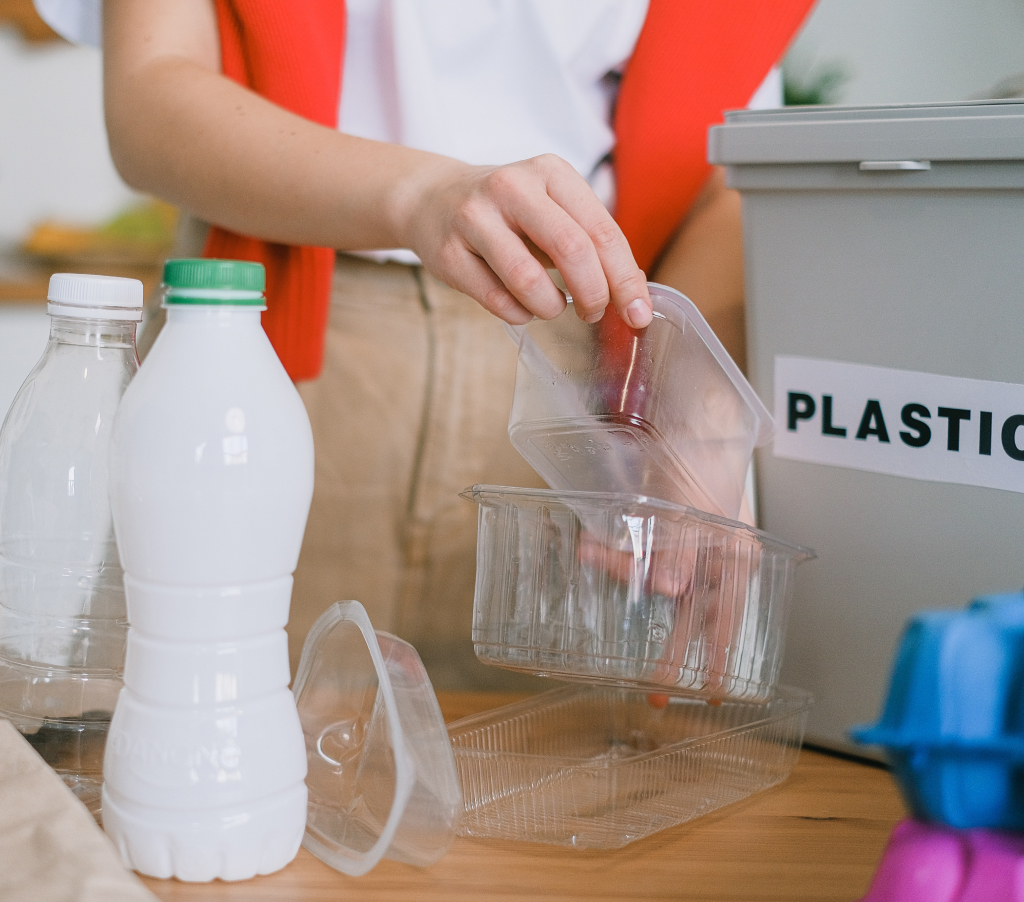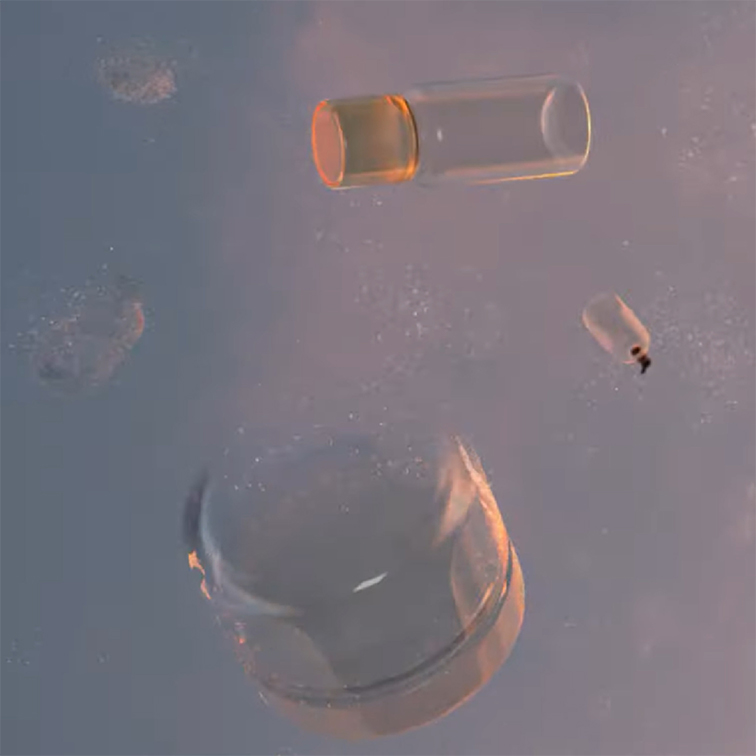
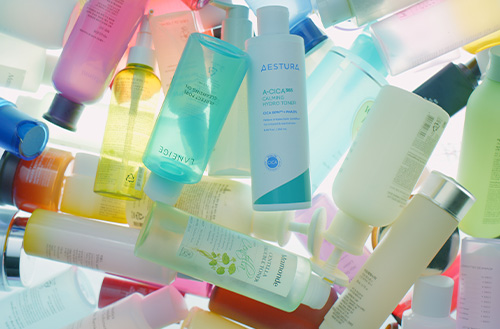
Plastics: What's the Endgame?
Eco-Friendly Story, Episode 4.

Columnist
Kim Jeong-lim Safety and Environment Support Team

In our previous episode, we delved into plastic recycling. Plastics represent a significant waste output from consumer goods companies and are a focus of reduction efforts for the sake of our planet. This episode will explore three methods of waste disposal, including plastics. While there may be overlap with the last column, the focus will be on practical examples centered around plastics.
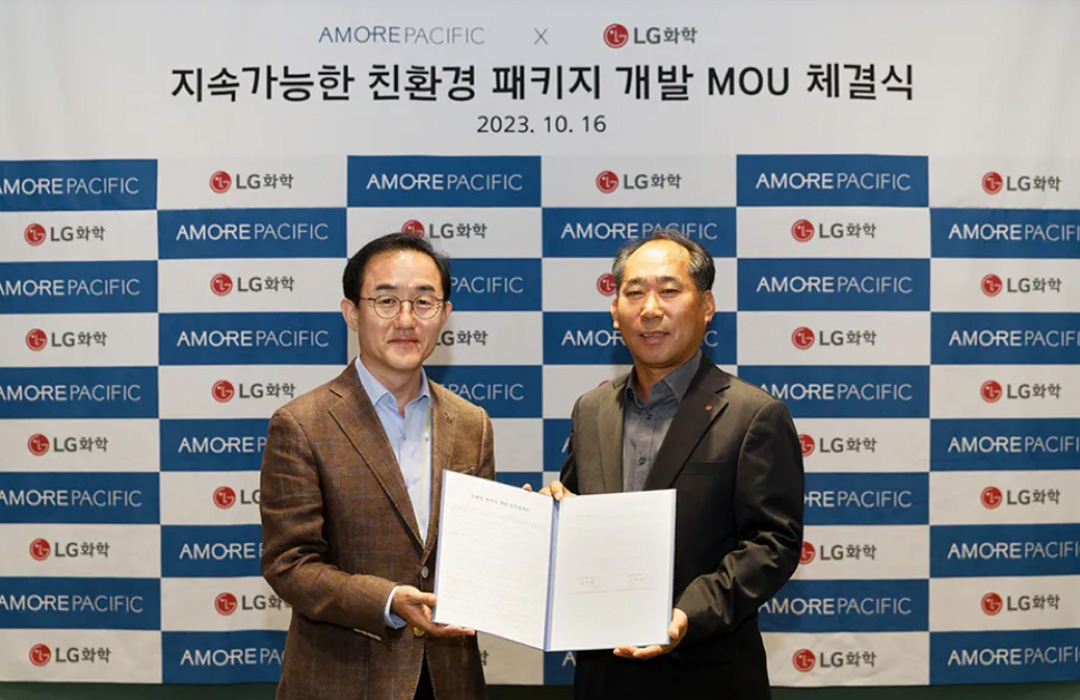
#intro
Following that column, Amorepacific entered a business agreement with LG Chem to develop eco-friendly cosmetic containers. Meanwhile, SK Geo Centric introduced an agenda through a commercial, proposing the transformation of waste plastic into an infinite resource. Thus, the main topic remains plastics. Just as humans, at the end of life, return to the earth through burial or cremation, plastics, which have made our lives comfortable, face a trifold destiny at the end of their lifecycle: landfill, incineration, or recycling. Despite efforts to recycle as much plastic as possible, the reality is that most end up in landfills or incineration
1 Landfill – A lesser yet ailing method
In waste disposal, 'landfill' refers to the process of dumping waste into pits or depressions in the landscape and then flattening the area with soil once it's complete. In simpler terms, it's burying the waste.
The Seoul Metropolitan Area Landfill, responsible for the waste of the capital region, is operated under the management of the Sudokwon Landfill Site Management Corporation (SLC), a subsidiary of the Ministry of Environment. It processes domestic waste from the capital region, including Seoul, Incheon, and Gyeonggi Province.
Historically part of Gimpo City due to its location in the Incheon Geomdan area, it's now a massive facility spanning from Incheon's Seo-gu to Yangchon-eup in Gimpo City, shaped like an 'L.'
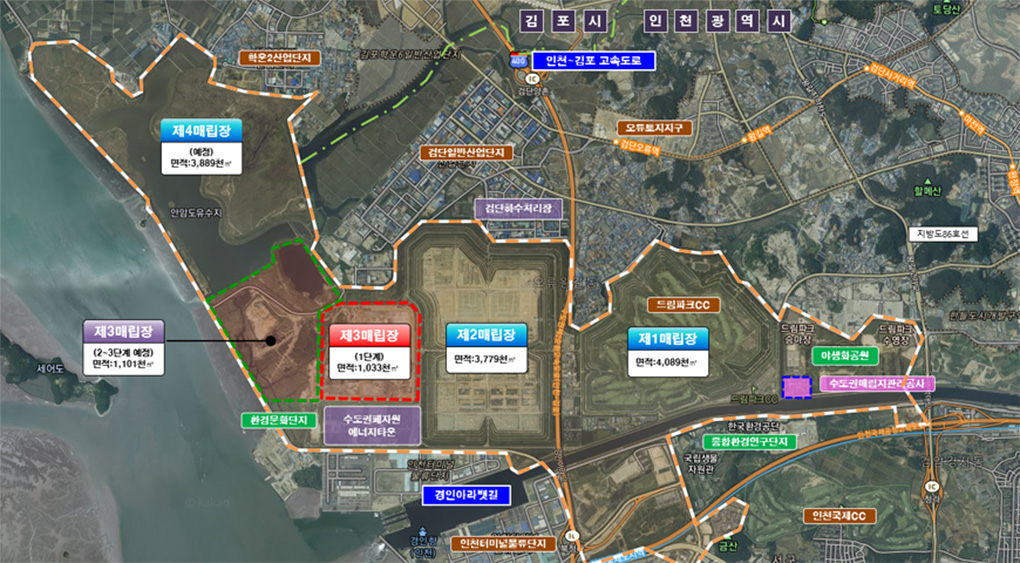
Location Map of the Seoul Metropolitan Area Landfill. Source: Sudokwon Landfill Site Management Corporation (SLC)

Area and Operational Status of the Seoul Metropolitan Area Landfill. Source: Sudokwon Landfill Site Management Corporation (SLC)
Formerly a literal dumpsite plagued with foul odors and swarms of flies, the facility has transformed through investments. Now, golf courses or parks sit atop, and the methane gas produced from the landfill is converted into electricity for profit.

The 3rd Landfill in Operation, The 1st Landfill IS Now a Golf Course.
Source: JoongAng Daily
Landfill, by its nature, favors countries with expansive lands, and in nations with limited territory, saturation of landfill sites poses significant issues. Consequently, along with unpopular incineration plants, it becomes a subject of political negotiation.
Even a cursory look at the Seoul Metropolitan Area Landfill reveals conflicts, such as those arising from Incheon's refusal to extend landfill deadlines and its use as a bargaining chip in discussions about Gimpo City's incorporation into Seoul.
As of 2020, the amount of plastic treated through landfilling is 600,000 tons. Considering the total generation of 9.6 million tons, this represents a somewhat modest 6.2%.
The plastics ending up in landfills include non-recyclable thermosetting plastics and PVC from industrial waste, but the majority comes from household trash.
Plastics, especially vinyl and small-sized items, are packed in pay-as-you-throw garbage bags and end up in landfills, thus burying non-decomposable waste in the ground. It's a reality that plastics, which take over 500 years to decompose, are being disposed of in these bags.

Amorepacific Beauty Park ZWTL Certificate
A notable effort to minimize landfilling is the Zero Waste To Landfill (ZWTL) certification, overseen by UL Solutions, America's first safety certification company. This certification categorizes efforts to eliminate landfilling based on the proportion of recycling in total waste output, dividing into three levels: ▲ Platinum (100% recycling rate), ▲ Gold (95-99%), and ▲ Silver (90-94%). The Osan Beauty Site, Daejeon Daily Beauty Site, and Cosvision Site have all achieved the Platinum rating, a first in the domestic cosmetics industry. This signifies the international recognition of achieving 100% recycling of waste output. The Healthcare Site is also preparing for ZWTL certification. ZWTL is being pursued not only in manufacturing but also in the service and construction industries. Amorepacific is the only company in the domestic cosmetics industry to have achieved this certification, signifying its substantial efforts and commitment to zero landfilling.
2 Incineration – Practically Sound, But…
The dictionary defines incineration as "destruction by burning."
In South Korea, the proportion of waste incinerated exceeds that of landfilled. Specifically for plastics, the amount incinerated is a staggering 6.7 million tons, over 11 times higher than landfilled.
Seoul manages 2,200 tons of waste through five locations, including Mok-dong, while Incheon processes 960 tons in Songdo and Cheongna. Across the metropolitan area, each city or its neighboring cities and counties handles incineration.
Plastics from household waste are processed through municipal incinerators. In contrast, waste from businesses is converted into SRF (Solid Refuse Fuel), sent to power plants as waste plastic, or used as a supplementary fuel in cement production.
The reason for the high rate of incineration in plastic disposal is that many plastics, failing to be recycled, end up being incinerated.
Despite diligent recycling efforts in apartments and houses, the reality is different. Plastics collected often arrive contaminated or colored, hindering recycling. The amount of plastic rejected during the sorting process often exceeds that accepted.
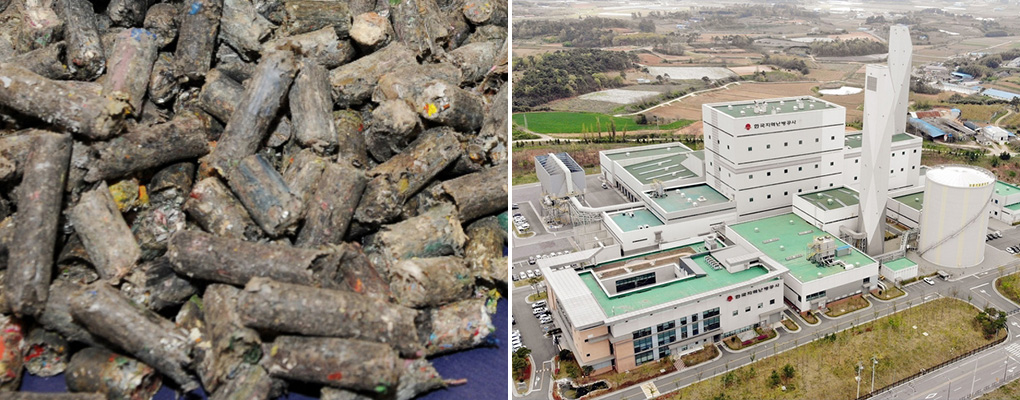
A Photo of SRF. Source: Energy Times / SRF Cogeneration Plant. Source: Korea District Heating Corporation
Incineration is not inherently wrong.
For medical waste, incineration is the right choice due to infection risks.
Its most significant advantage is reducing waste volume by up to 1/100th, a practical method for countries with limited land. Japan, for example, relies on incineration for about 70% of its waste.
In the past, incineration was the final step, but now, it serves as an alternative fuel to coal or is used for cogeneration and electricity production, extracting energy one more time.
The Ministry of Environment has decreed that direct landfilling of household waste will be banned starting in 2026. Therefore, metropolitan cities must establish and operate regional incineration plants.
In Seoul, plans to build a new incinerator in Sangam-dong have met resistance, and in Incheon, construction of a regional incineration plant is stalled due to local opposition.
Although incineration inevitably produces air pollutants, stricter air quality laws mean any exceedance in emissions is automatically reported to the Ministry of Environment through TMS, allowing residents to monitor harmful substances in real time.
3 Recycling – The Biggest Rival is the New Product
The last column focused on recycling. Despite many constraints on physical recycling and the blockage of overseas processing methods, there has been significant progress, especially with chemical recycling, represented by pyrolysis oil, entering the commercialization phase.
Ideally, plastics should be processed through recycling and reuse, but economic considerations cannot be ignored.
The fundamental nature of plastic recycling is inversely proportional to oil prices.
For instance, in October 2020, during the COVID period, compressed PET was traded at an average of 209 KRW, but in October this year, it reached 506 KRW. Meanwhile, international oil prices, based on Dubai crude, rose from 41 to 93 USD.
From my experience, when international oil prices were 30-40 USD, recycling companies refused to process packaging PP bands, citing unprofitability, leading to disposal at the company's expense. Conversely, when prices hit 80 USD, recyclers paid to take the same waste.
ESG has indeed accelerated the commercialization of plastic treatment technology.
However, chemical recycling, the new hope of plastic recycling, is not a panacea and is still economically unviable compared to new products due to its higher cost.
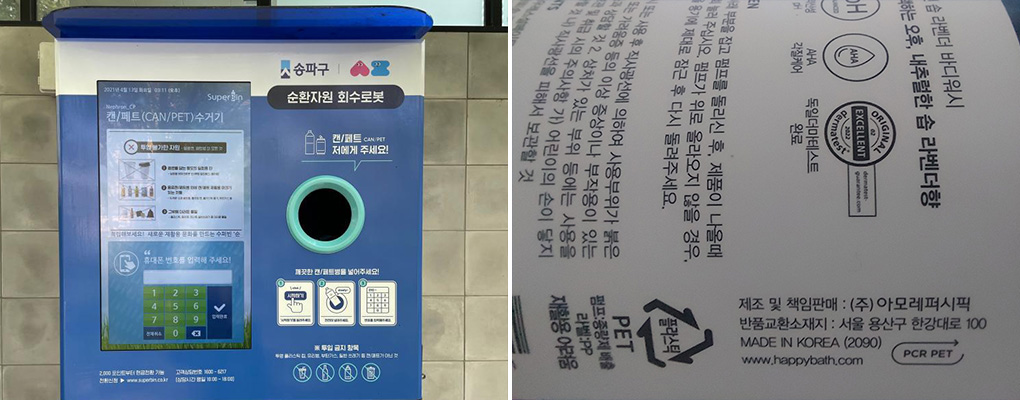
PET Bottle Collection Robot. Source: Songpa District Office, Seoul / HAPPY BATH Body Wash Container made from PCR PET
For recycling to be economically viable and achieve economies of scale, recycling rates must be increased. If the costs wasted in sorting and discarding were eliminated, the proportion of recycling could be raised. Wouldn't the price of recycled materials decrease as more regenerated materials become available?
The PET bottle separate collection system is a starting point in this context.
Amorepacific, deeply empathetic with customers, society, and nature, strives to create a new paradigm in producing, purchasing, using, and disposing of plastic products.
Through collaborations, it has replaced plastics with paper and developed eco-pumps without metal springs. By developing paper containers and supplying recycled PE and PP plastics, the company aims to transition all its products to recyclable, reusable, or compostable by 2030.
#outro
Amorepacific is diligently implementing the 4Rs - Return, Reduce, Reuse, Recycle - to diminish plastic usage. The initiation of these 4Rs starts with 'Return,' the collection of empty containers, a campaign Amorepacific has conducted since 2009. Reducing plastic usage is not solely the producer's responsibility; it requires the active participation of consumers, too. This is because the reduction of plastic usage is not achievable by the efforts of one party alone. While one might adopt an indifferent or nonchalant attitude towards plastic reduction, it's essential to consider this issue personally. This is because, at a micro level, it's about the sustainability of corporations. On a macro level, it is directly tied to the fundamental human right to a clean environment, encompassing broader environmental rights.
Making a more beautiful world.
It’s the purpose behind everything we do at Amorepacific.
It’s why in 1993 we dedicated ourselves to taking full responsibility for the impact of our products.
Rather than celebrating accomplishments, we focus on what needs to be done next.
Always asking: “how can we create new beauty that benefits the world”?
We start with deep empathy for our customers, society, and the natural world all around us.
Creating the ties that bind and working together to create a more beautiful world.
In that spirt,
Amorepacific will change how plastic products are made, bought, used and discarded.
We will:
Use Less.
Recycle More.
Maximize plastic lifespans.
It’s our responsibility, and our commitment.
To you.
To ourselves.
To the planet.
Let’s think again about how we use plastics in our everyday lives.
By joining hands, the world becomes even more fantastic.
So let's reduce plastic for a more beautiful world.
Less Plastic. More Fantastic!
-
Like
0 -
Recommend
1 -
Thumbs up
0 -
Supporting
0 -
Want follow-up article
0



